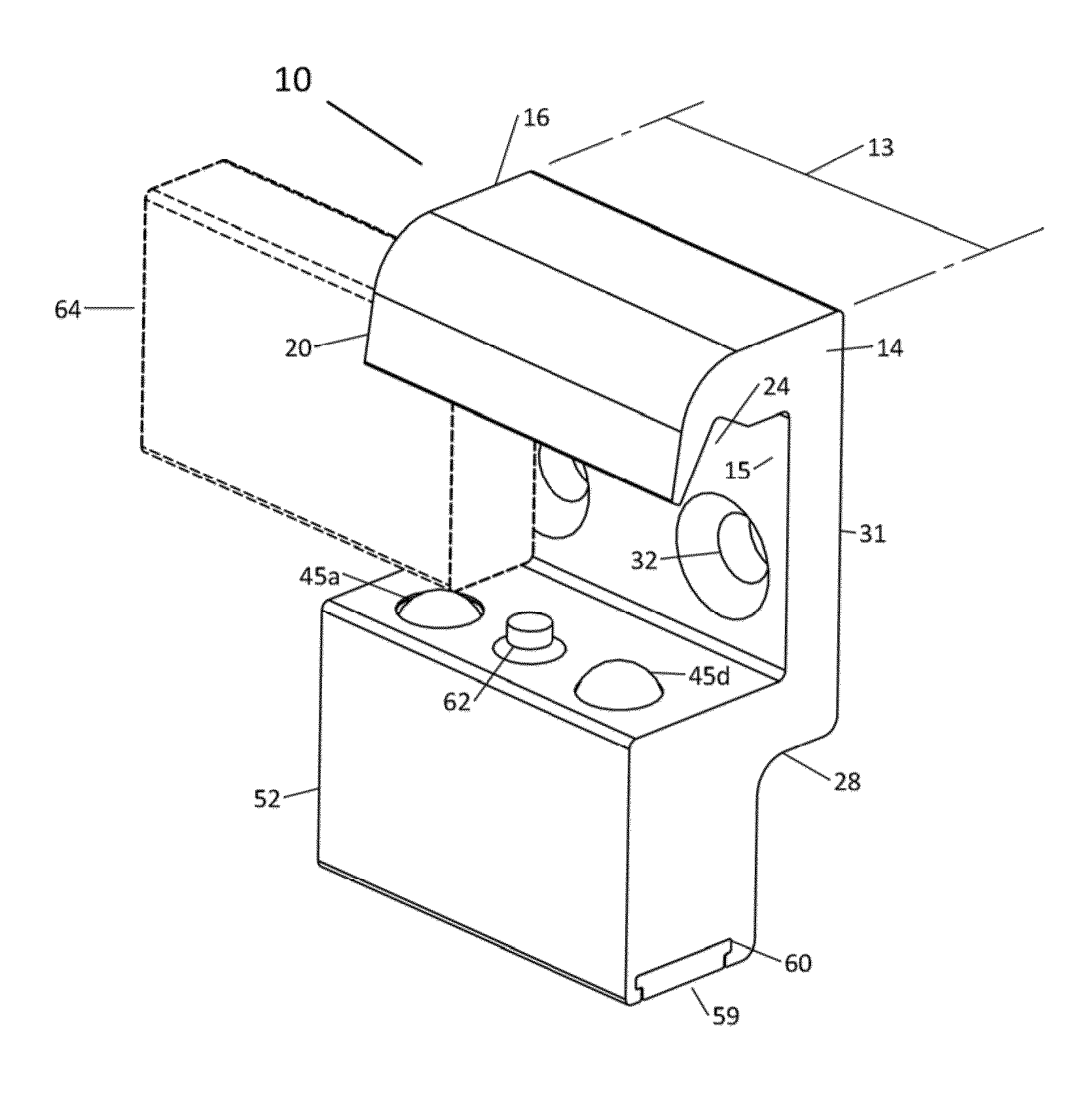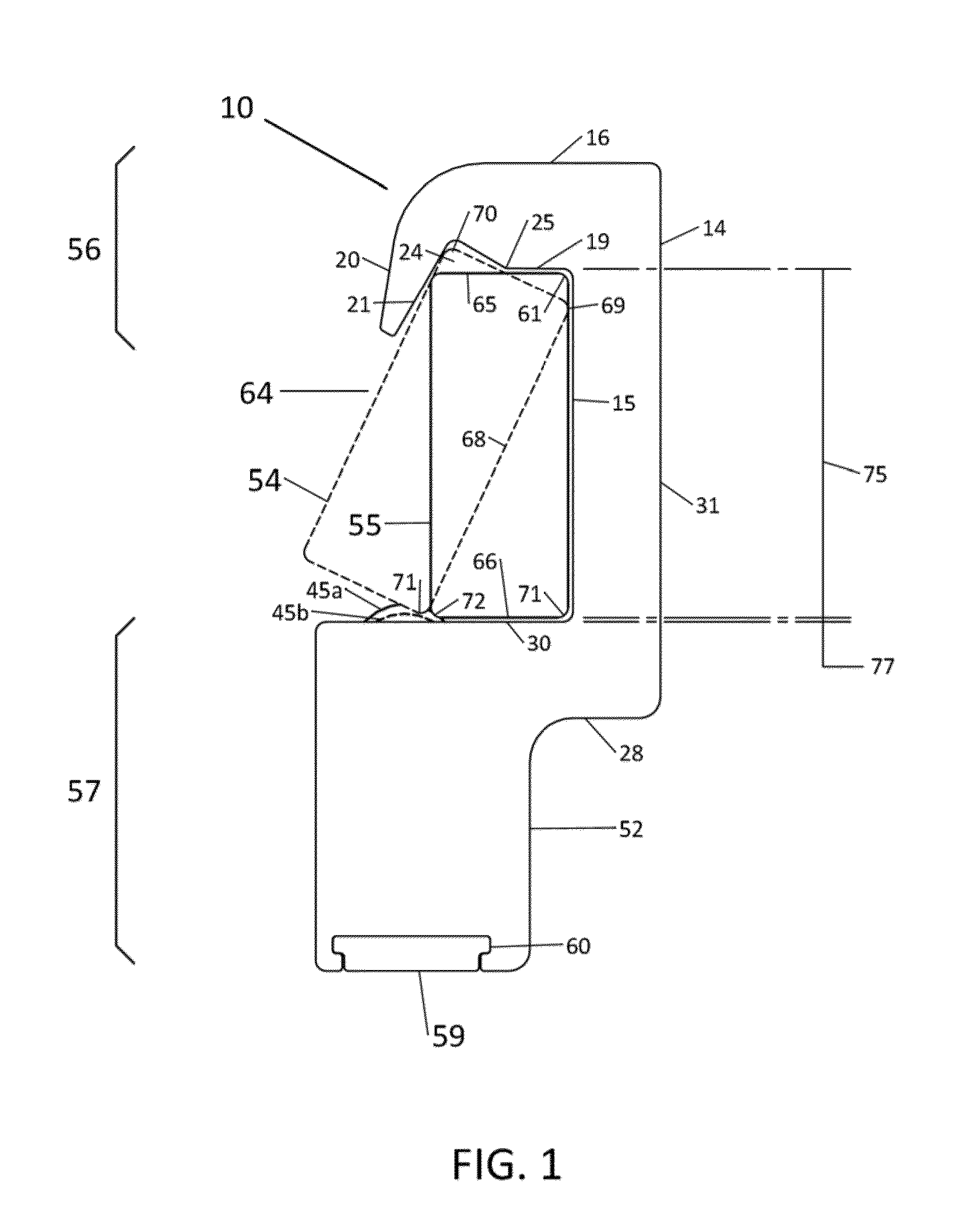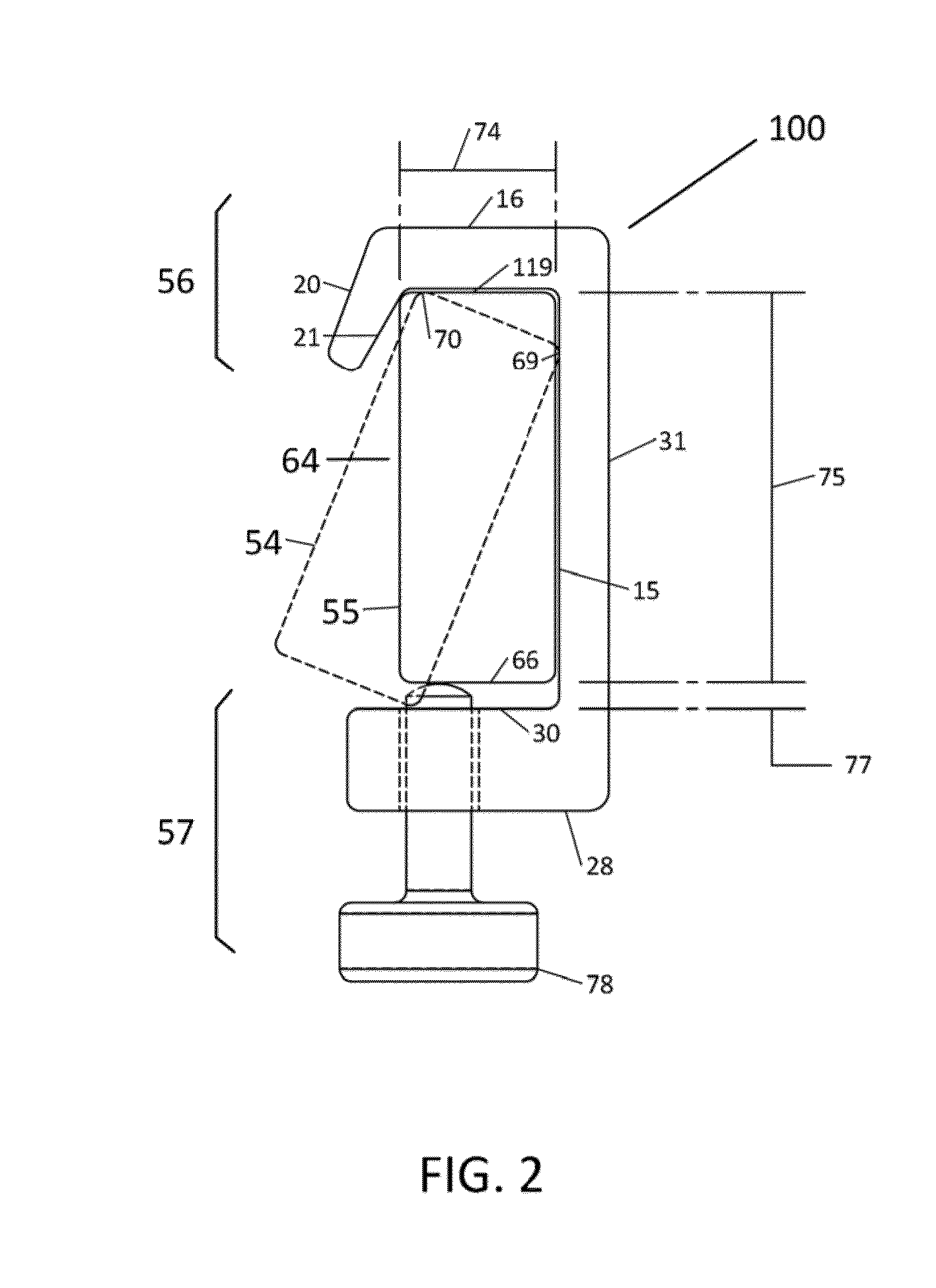Modular rail adapter system
a module-type, rail-type technology, applied in the field of modules, can solve the problems of inconvenient safety inspection, inconvenient use, time and effort, and no known rail-type adapter, and achieve the effects of reducing the clearance gap, minimizing the clearance gap, and being convenient to us
- Summary
- Abstract
- Description
- Claims
- Application Information
AI Technical Summary
Benefits of technology
Problems solved by technology
Method used
Image
Examples
Embodiment Construction
[0026]Now referring to the drawings, the modular rail adapter system is shown and generally illustrated in the figures. In accordance with the present invention the modular rail adapter 10 disclosed automates the task of latching an adapter to a DIN rail 64 without the need for users to manually latch adapter 10 to rail 64 and to remember to carry out this critical safety task. The aim is to allow users to simply snap adapter 10 to DIN rail 64 in one, continuous movement using a built-in, self-latching catch mechanism, as further described below.
[0027]When a known DIN adapter 100 is in its vertical operating position 55, as shown in FIG. 2, it can only be removed from DIN rail 64 by inclining it against the rail until the lower return leg 28 clears the bottom edges of the rail at which point the adapter can be disengaged and removed from the rail. In known DIN adapter systems, this inclining motion requires a wide clearance gap 77 between the inner return leg surface 30 of an adapte...
PUM
 Login to View More
Login to View More Abstract
Description
Claims
Application Information
 Login to View More
Login to View More - R&D
- Intellectual Property
- Life Sciences
- Materials
- Tech Scout
- Unparalleled Data Quality
- Higher Quality Content
- 60% Fewer Hallucinations
Browse by: Latest US Patents, China's latest patents, Technical Efficacy Thesaurus, Application Domain, Technology Topic, Popular Technical Reports.
© 2025 PatSnap. All rights reserved.Legal|Privacy policy|Modern Slavery Act Transparency Statement|Sitemap|About US| Contact US: help@patsnap.com



